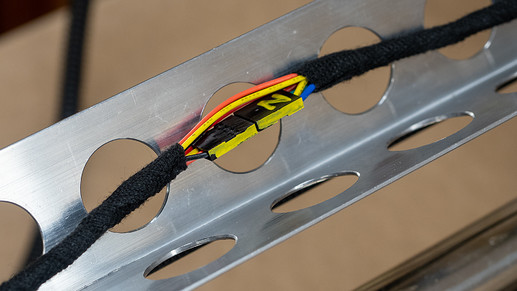Well Tom, by your “no budget” definition, and in the spirit of Dolly Parton’s famous quote - “it costs a lot of money to look this cheap”, I had some automotive loom fleece tape lying around, leftover from my camper build, and I guess I’m about to find out why no one seems to use it in this environment! 

By some miracle - everything moves when I tell it to, and only one connection needed reversing! I’ve marked the sides of all the dupont connectors with yellow so I know which way to put them back during final assembly, which would be happening now if I wasn’t reporting in!
